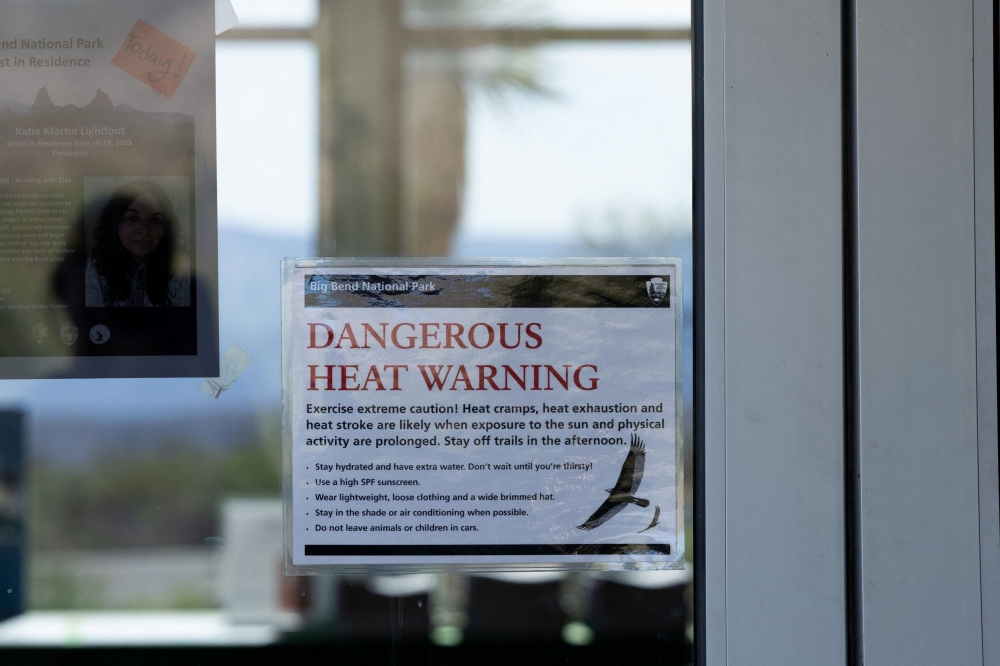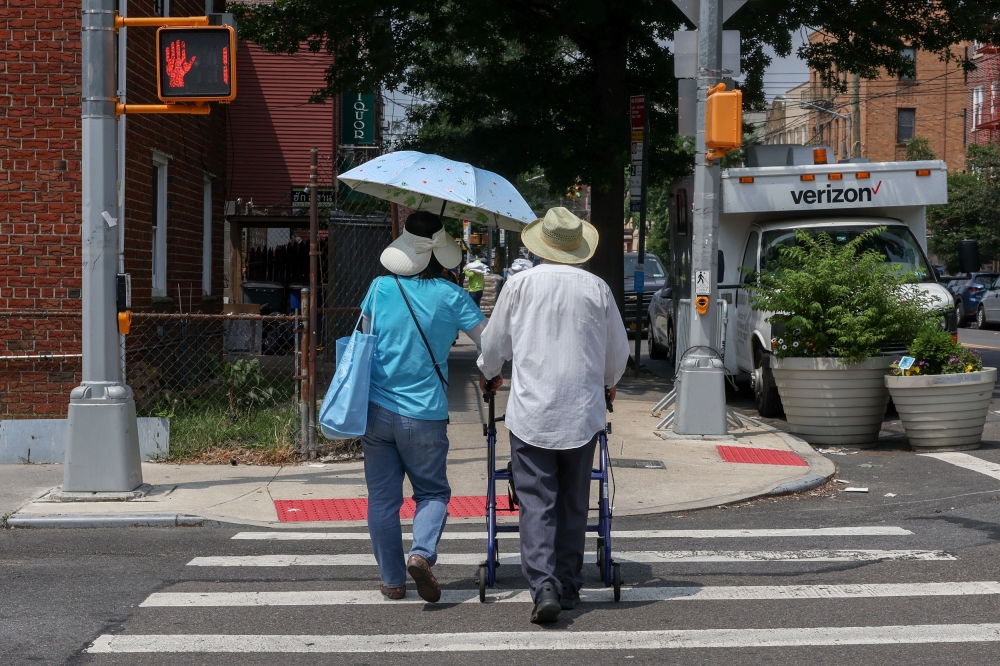Beyond sunburn: How extreme heat strains public health systems and endangers lives
NEW YORK, June 26 — As tens of thousands of people braced for more extreme heat yesterday, authorities and public health experts in the United States issued heat warnings to help keep people safe. Cities of the US Midwest and East Coast were seeing temperatures in the 90s Fahrenheit (32-38 degrees Celsius) this week, as was much of southern Europe.
What are the health risks from extreme heat?
Heat can affect health in various ways.
With heat exhaustion, a person can feel dizzy, shaky, thirsty or develop a headache. It is not usually serious unless the person is unable to cool down within 30 minutes.
When people are unable to cool down, they can develop heatstroke — a medical emergency defined as the body’s core temperature, usually close to 36.8 Celsius, going above 40.6 Celsius.
A person with heatstroke may have symptoms including rapid breathing, confusion, seizures, or nausea. Without medical attention, heatstroke can lead to long-term organ damage and death. High temperatures are especially dangerous when combined with high humidity, which makes it harder for people to cool down by sweating. Both are expected to rise with climate change, as warmer air can hold more moisture.

Who is at risk?
Extreme heat can be harmful to anyone, but some populations are more vulnerable than others.
Experts are most concerned about older people, young babies, and people who are socially isolated. They also worry about outdoor labourers and people struggling economically.
People with pre-existing health conditions, such as lung disease, heart problems or diabetes, should also be extra cautious.
Experts say more deaths occur earlier in the summer when people’s bodies have not had a chance to acclimatise.
Statistics on heat-related deaths are often considered to underestimate the impact of extreme heat because many countries do not record heat as a specific cause of death.

Less obvious risks of extreme heat
Apart from testing a body’s ability to regulate its own temperature, extreme heat can pose a host of secondary risks.
Warmer temperatures encourage the growth of bacteria and algae. So heatwaves can raise the risk of water being contaminated with diseases such as cholera, or of lakes and rivers becoming choked with toxic algae.
Heat can also damage crops or buckle roads and disrupt transport systems.
Wildfires fuelled by dried-out trees or shrubs can lead to dangerous levels of air pollution.
Heat stress, including the sleep disruption caused by heat, can also contribute to poorer mental health.
Medical experts expect that certain diseases will expand their ranges as climate change enables disease-carrying insects to move into new areas.
For example, we could see more of the deadly, tick-borne Powassan virus, while scientists also have mapped the expanding habitat of Aedes mosquitoes, which carry dengue, Zika virus and chikungunya.
In California’s Central Valley, desert-loving fungal spores that cause Valley fever could do well as temperatures climb.

What you can do
Public health advisories across the United States urge people to stay cool, stay hydrated, and avoid over-exertion.
Many cities have set up public cooling centres or are providing free access to air-conditioned public transport.
Employers should ensure workers have adequate breaks and hydration, and that they are not working outdoors when the heat is dangerous. — Reuters
Get Insurance Now



